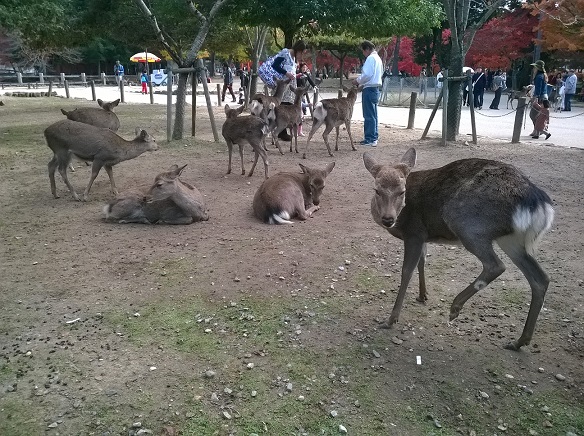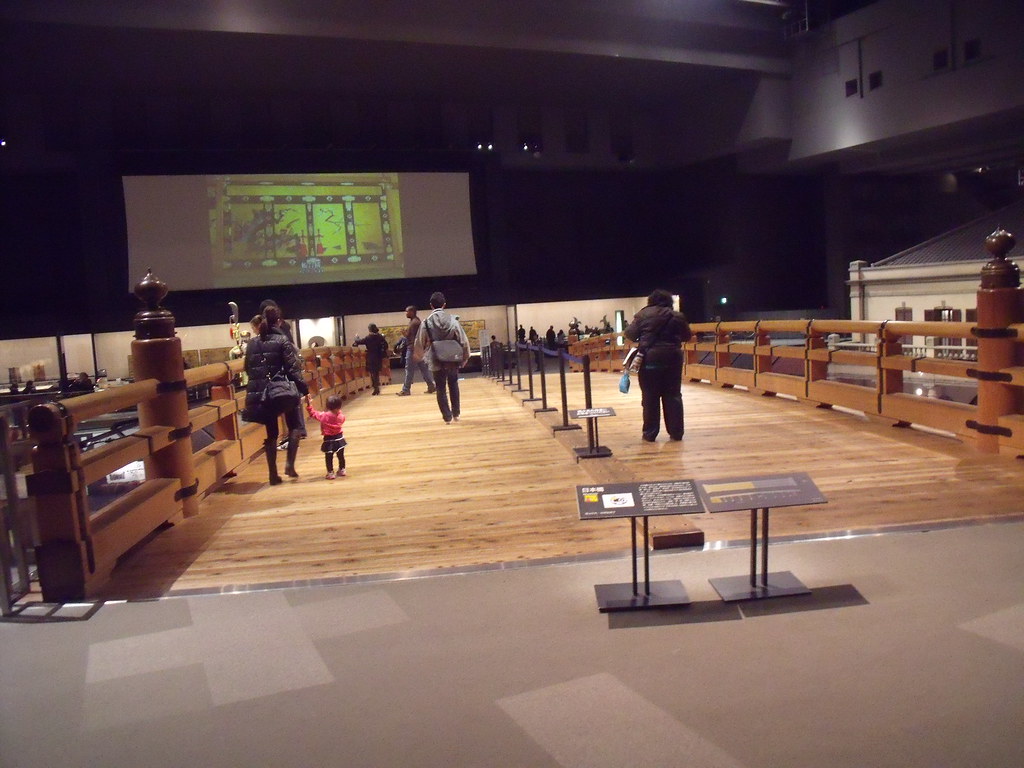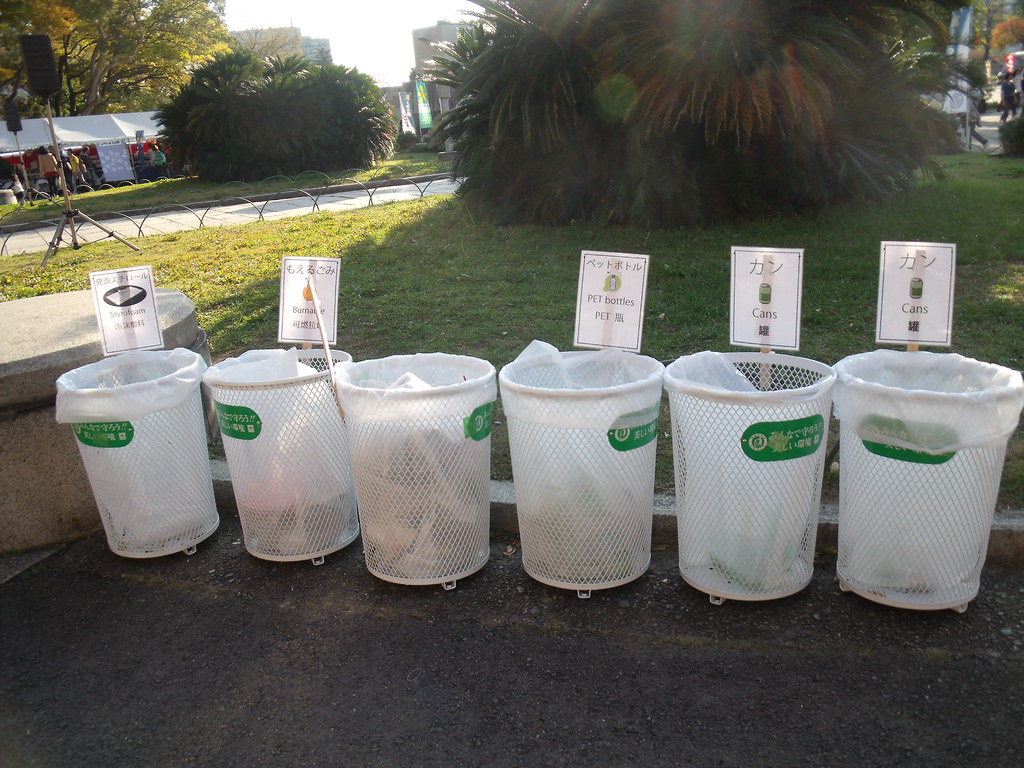Japan is a very big country with diverse mix of landscape, people and sights and it would take several trips to get a complete feel of it. But meanwhile, I experienced my first autumn this year there clothed in four layers, gloves and a beanie cap. Here are a few features unique to Japan which is a good start to introducing the country’s culture, creativity and beauty.
Edo Tokyo Museum
This museum is seven floors high but only two floors packs in the history of Tokyo from 1590 to present day. But those two floors are not to be underestimated as the full breadth of coverage is there. You can learn about EVERYTHING JAPAN here, from the ‘Nihonbashi’ bridge constructed in the 1600s which has traditionally been the zero point from which all distances are measured throughout Japan to the post world-war two developments. I was fascinated with some of their huge replicas of the Kabuki theatre and the Choya Newspaper Company which one can touch and pose alongside.
Kitsune Udon
This is such a simple but lovely and delectable dish, that just thinking about it is making my mouth water now. Made of thick udon noodles served in a dashi based soup stock, this unpretentious dish is sweet, salty, light and filling all at the same time. The thin sheets of fried tofu are sweet and chewy. No spoons are available so slurping up the soup as you chow down the noodles is the correct and lip-smacking way to enjoy this dish!
Le Petit Prince Museum
My fellow travellers and I were surprised to chance upon this beautiful museum during our trip to Hakone, a destination to experience nature’s beauty and an hour from Tokyo. The museum founded by Akiko Torii is nothing less than enchanting. So you can let your heart fly as you stroll past a rose garden, photos and exhibits portraying the life of author, Saint- Exupery, and snippets from the book. The webpage for this museum is: http://www.tbs.co.jp/l-prince/en/about-se.html
Recycling bins
Recycling is made all the more efficient in Japan through the separation of all possible parts of trash – not just PET bottles, paper and cans but also plastic, aluminium cans and glass bottles. So there is a bin for all of your trash here.
Prayer items
I caught sight of some these prayer items in Shinjuku. Meant for temple prayers, these colourful imitation of puppets, fruits and brooms are showered with verses of prayers and good luck by the seller before customers bring them into the temple.
Shibuya crossing
Outside the Shibuya station in Tokyo,there is a traffic intersection where there are about four or five pedestrian crossings with traffic lights which all start and stop at the same time. So all the traffic lights turn red or green at the same time and all the pedestrians follow suit stopping and crossing at the same time making it one of the ‘busiest’ crossings in Japan at any one time.
Todai-ji temple
This is a must-see if you are in the city of Nara, Japan. The temple is a listed UNESCO World Heritage Site. In addition to being a scenic presentation of temple architecture in the 8th Century, the area is filled with numerous deers who are regarded as messengers of gods in the Shinto religion. You can feed the deer, take selfies with them and roam with them to your heart’s content.
Tsukiji fish market
I didn’t make it to the Tsukiji fish market in pre-dawn hours to catch the auction. But I did make it by the time the market closed, and got some close-up shots of huge chunks of tuna fish, oysters and plenty of other fishes fresh from the sea!
Vending machine order
Japan has a convenient facility for the budget conscious and those who want to cut the queue. That facility is the vending machine where you can select and pay for the dishes and drinks you want and then bring the ‘receipt order’ to the counter to collect your food. It is fast, fun and something to try just for the experience.
Zen Garden
Zen gardens were first conceived of to aid meditation as they are designed to capture the essence of nature, and meant to be seen while seated from a single viewpoint outside the garden. Unlike regular gardens, which feature a variety of flaura and cover great lengths, the zen garden is all about minimalism, often featuring no plants and more gravel, stones, rocks and moss.



![[Review] Be Our Guest to a Night of Enchantment with Disney’s Beauty and the Beast in Singapore This December [Review] Be Our Guest to a Night of Enchantment with Disney’s Beauty and the Beast in Singapore This December - Alvinology](https://media.alvinology.com/uploads/2025/12/Screenshot-2025-12-14-195843-110x110.png)

![[Review] Tim Ho Wan’s Limited Edition East-Meets-West Menu Brings Festive Flavours to Dim Sum [Review] Tim Ho Wan’s Limited Edition East-Meets-West Menu Brings Festive Flavours to Dim Sum - Alvinology](https://media.alvinology.com/uploads/2025/12/6194907278834600928-110x110.jpg)






















![[Review] Step Into a Suspect's Mind in Sight Lines' Thrilling Crack the Case: The Dreamcatcher [Review] Step Into a Suspect's Mind in Sight Lines' Thrilling Crack the Case: The Dreamcatcher - Alvinology](https://media.alvinology.com/uploads/2025/10/WhatsApp-Image-2025-10-04-at-9.31.31-PM-1024x768.jpeg)


![[PROMO CODE INSIDE] TADA Launches in Hong Kong with Exclusive Deals for Singapore Travelers [PROMO CODE INSIDE] TADA Launches in Hong Kong with Exclusive Deals for Singapore Travelers - Alvinology](https://media.alvinology.com/uploads/2024/12/KV_ENG-1-1024x1024.jpg)